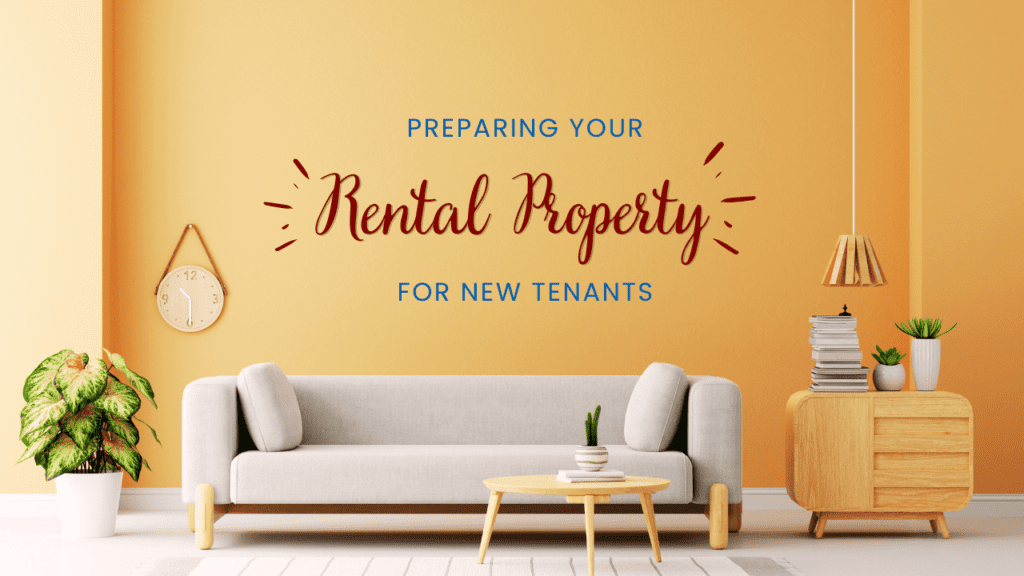
Moving into a new property can be stressful for both the tenant and the landlord. If you have a new resident preparing to begin a tenancy at your property in San Francisco, you’ll want to make the process as seamless and efficient as possible.
We’ve found that having a step-by-step guide is the best way to manage the process. It helps you keep all the details organized, and you’ll also have a documented and consistent system in place that you can refer to every time you have one tenant moving out and a new tenant moving in.
This process has to move quickly, otherwise you’ll extend your vacancy period and delay the consistent rental income that you rely upon as an owner. That does not mean you should rush through it. Give the entire turnover process the care it deserves. Then, you can list the home and prepare it for your new tenants.
Take a look at what our San Francisco property management experience has taught us about the process of preparing your rental home for new tenants.
Provide a Rent-Ready San Francisco Rental Property
First, you’ll want to make sure the property is ready for your tenant.
Start with a thorough inspection. This should be conducted after your previous tenant moves out, and you’re inside the property to assess the work that needs to be done in order to make it ready for your next renter.
Check for anything that isn’t working properly. You cannot have your new tenants moving into a home with a broken refrigerator or windows that don’t close properly. Check everything. Make sure it’s all functional and if it’s not, schedule the work right away – before you begin showing the property to prospective new tenants.
Make a list of minor things that are needed such as new air filters, new light bulbs, and updated landscaping and paint.
Then, consider what you will need to do in terms of improvements or upgrades. These may be necessary to make the home attractive to a new pool of tenants. Maybe it’s been years since you changed the carpet. Why replace the existing carpet when you can tear it up and install hard surface floors instead? They’re more modern and easier to maintain.
Look for opportunities to make cost-effective improvements before your new tenant arrives. This is a great way to attract high quality residents. New appliances, fresh paint, and upgraded technology inside your rental property will make a big difference. Improve your lighting. Install cosmetic improvements like tile backsplash or ceiling fans.
Double-Check for Safety and Habitability Issues
The repairs you make and the work you do are essential to making the home desirable to your next tenants.
Don’t stop at the maintenance and the upgrades.
You also have to make sure the rental property is safe and habitable. Is it ready for occupancy according to state and local laws?
Keep the utilities on when the home is vacant, otherwise you won’t be able to get the work done. You’ll also want to have at least some light on at the property so it doesn’t look vacant and vulnerable.
Inspect the smoke detectors and carbon monoxide detectors to ensure they are working. Have the plumbing and electrical systems checked to ensure you’re not in danger of having any leaks, fires, or other problems. Doors and windows should open, close, and lock properly. Look for loose handrails, trip hazards on floors, and branches or roots that may present problems outside.
Cleaning Your San Francisco Rental Property
Once you are certain that everything is safe and working, and you’ve made some upgrades and had all the vendors come through the front door that you need, it’s time to turn your attention to cleaning your property.
You’ll want to have the home professionally cleaned. Marketing your San Francisco rental property will not be easy if there’s dirt left behind by prior tenants or the vendors who performed work during the turnover period. Good renters don’t want to move into the dust and dirt left behind by your workers or your former tenants.
Hire cleaners who will pay attention to detail. You want shining surfaces and dusted ceiling fans. Exceptional marketing photos will require a clean, empty home.
Change Your Locks
It’s important to re-key your property before new tenants move in. While collecting keys and remote openers is surely part of your move-out process when one tenant leaves, you have no idea how many copies of the keys have been made and distributed to friends, family members, and just about anyone.
When you rekey your property, you’re giving your new tenants some extra safety and security. It allows you to maintain more control over who has access to the property as well. Keep a copy for yourself in case your tenant misplaces their key or you need to get into the home during an emergency.
If you don’t like the idea of a new key, there’s plenty of technology available to help you make your property ready for a new resident. Install a digital keypad, and instead of changing the locks between tenancies, you’ll simply have to reset the code.
Create Great Curb Appeal
You’ll want to make your outdoor space and your landscaping look great before move-in.
Ideally, you’ll pay attention to curb appeal before you even begin marketing your property. It’s important to attract your best residents by making a great first impression. When they approach your home, drive by your property, or even scroll through marketing photos online, tenants need to connect with the way your property looks. It should be welcoming and inviting.
Preparing the San Francisco Lease Agreement
Signing the lease is an important step before a new tenant moves into your property.
You’ll need a lease agreement that’s specific to San Francisco. California has some statewide requirements for lease agreements, and so does the city. You’ll need to include some necessary disclosures, and you’ll also have to be sure your lease reflects some of the recent legal changes. Rent control, for example, means that your lease agreement must state whether your property is subject to the rent control laws or exempt from it.
Get the lease signed as soon as possible after a tenant has been approved. You can send it digitally and be available to answer any questions that your incoming tenant may have about their responsibilities and your expectations.
In addition to getting the lease signed, you’ll want to collect the move-in funds that are necessary before the move-in date actually arrives. You never want to hand over the keys until your tenant has paid the security deposit, the first month’s rent, and any other fees or deposits such as pet fees. There are limits to what you can collect in California, so don’t over-charge. For unfurnished rental properties, you cannot collect more than twice the monthly rent as a security deposit.
Move-In Inspection: Document the Condition of Your Property
Right before your tenant moves in, you’ll have to prepare by documenting the condition of your property before they take possession. You need an accurate record of how the property looked before they lived there.
During your move-in inspection, we recommend that you take a lot of pictures to back up your description of the property’s condition. Note any imperfections or problems that you did not manage to take care of before the move-in date (there should not be many; but, maybe there’s a small scratch in a counter or a closet door that sticks).
Give your tenant an opportunity to conduct a walk-through of their own so they can sign off on the condition report. It’s important that you both agree on the condition of the home. You’ll use this report at the end of the tenancy, when you’re making decisions about whether there was any damage left behind by the tenant.
Provide New Tenants with a Move-In Orientation
 Now that your new residents are ready to move in and the property is ready for them, you’ll want to make sure they understand how the property works. It’s difficult and stressful for tenants when they arrive on Day One and cannot seem to set the thermostat or operate the dishwasher.
Now that your new residents are ready to move in and the property is ready for them, you’ll want to make sure they understand how the property works. It’s difficult and stressful for tenants when they arrive on Day One and cannot seem to set the thermostat or operate the dishwasher.
You can provide a video, a set of written notes, or an in-person explanation of where to find the water shut off valve, where the circuit breakers are, and which days the trash is collected.
This is not only a great way to welcome your tenants to their new home, it’s an outstanding first step towards better tenant retention. An efficient move-in process that’s full of necessary, helpful information and extra resources will result in a happier tenant who feels supported and appreciated.
These are just a few of the most important steps to take when you have a new tenant moving into your San Francisco rental property. For more tips and help with the move-in process, please contact us at Sharevest Property Management.